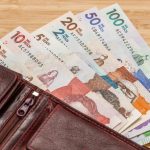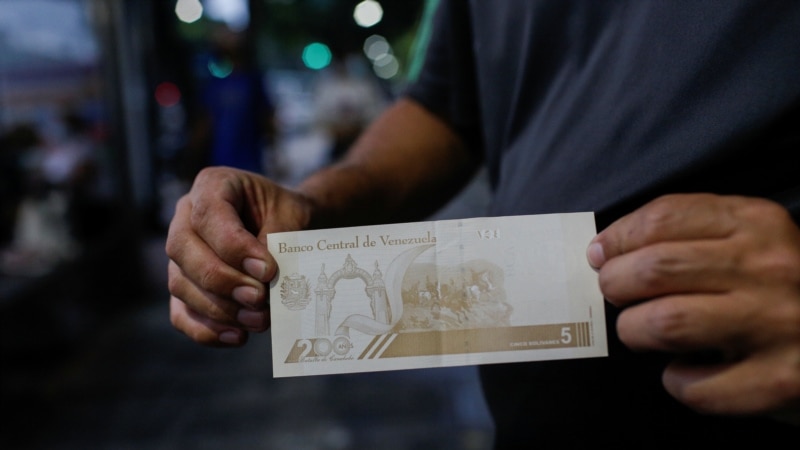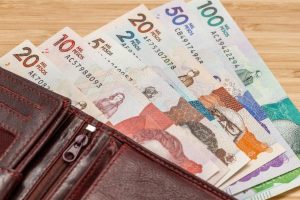The parallel dollar in Venezuela exceeded the barrier of 10 bolivars per unit. That price could still increase, according to experts, who predict that it will continue its upward trend and cause higher inflation at the end of this year.
Although the dollar marks an official cost of 9.29 bolivars on the page of the Central Bank of Venezuela this Monday, November 14, that indicator climbed last week beyond 10 bolivars in parallel markets. The informal economy and multiple sectors, such as shops and retail companies, are governed by that “black” dollar rate.
The rate of that parallel dollar, which the government of Nicolás Maduro usually refers to as the backbone of an “economic war” driven by external factors against his country, rose to an average of 10.58 bolivars per unit this Monday, according to publications. of social media portals, such as Monitor Dólar, Paralelo Venezuela and Dólar Today.
The rise in the parallel exchange rate in Venezuela occurs in a context “where there is not an abundance of currencies” in Venezuela, international reserves are at record lows and inflation has been rising for seven months, according to the economist Hermes Pérez in conversation with the voice of america.
According to their research, the prices of products, goods and services have tripled since last May compared to the value they maintained between January and April.
“The rise in inflation is taking its toll and the Central Bank has allowed the exchange rate to slide to match its variation with inflation, something it did in August,” explains Pérez, also a professor at the Metropolitan University, the last head of the exchange of the BCV and academic specialized in macroeconomics and oil.
Pérez stresses that a “gap” existed in the country until last July between 2021 inflation, of 686%, and the rise in the exchange rate, of 321%. In that period, prices rose at twice “the speed of the exchange rate” and the BCV opted to “close” that disparity.
“The inflationary outbreak observed since May has impacted the price of the currency, driving its rise. The eternal vicious cycle is perpetuated: prices rise, the exchange rate increases and the latter boosts the rise in prices”, points out the expert.
Pérez dares to predict that the exchange rate “maintains a path” upwards and that its price closes between 11 bolivars per dollar in the BCV, and the parallel at 12 bolivars.
Venezuela will experience in the last two months of the year “a rise in prices for seasonal reasons, greater liquidity at Christmas and the failure of inflationary containment” by the State, predicts the economist.
constant depreciation
The escalation of the parallel dollar in Venezuela has been going on without pause for years, despite the fact that the Maduro government has announced measures to improve the economy, such as the easing of price controls and two currency conversions between 2018 and 2021.
In this context, the country also experienced an unusual drop in its Gross Domestic Product of around 80 points and hyperinflation for more than four years that made its currency more valuable as a raw material for handicrafts than in the markets.
The exchange market continues to be a roller coaster in a nation that saw its bolivar depreciate by 25% in just three days, between August 23 and 25, when its BCV price went from 6.28 per dollar unit to 7.83.
A year ago, the dollar closed at 4.5 bolivars. Its current value then supposes a depreciation of the Venezuelan currency of 45%, according to the economist of the private firm Ecoanalítica and professor at the Andrés Bello Catholic University, Jesús Palacios.
“The exchange rate is more than doubling at the moment and that has an effect on inflation. There is a great displacement effect of the price increase in dollars and they are usually moments when the inflationary rise also picks up ”, he comments to the VOA.
Ecoanalítica has already observed a “rebound in inflation” in Venezuela of between 5 and 6 percentage points per week, that is, higher than the rise in prices for all of 2021 in Latin American countries such as Mexico, Jamaica, Paraguay, Chile, Peru and Colombia. .
This is a “quite important” inflationary level, since it can show an accumulated price rise of more than 20% only in November, says Palacios.
an artificial change
In the population there is “a lot of concern” about the jump in the exchange rate in recent days, he admits in an interview with the VOA the economist and director of the Center for Labor Research and Training (CIFO), Manuel Sutherland.
However, the parallel exchange rate and even more so the official one are “artificial” and should be located at significantly higher levels than the current ones, he warns.
“The calculations that we have made to date tell us that, for many months, the exchange rate should have been 28 to 30 bolivars per dollar to reflect the amount of money that the government issues inorganically” to try to stabilize the market official, with the injection of tens of millions of currencies for the weekly auctions, he maintains.
That money injected into the official auctions has no backing, he notes. “The 10 bolivars per dollar are still very far from a competitive exchange rate that allows companies greater dynamism and an opportunity to compete. It is an exchange distortion”.
According to Sutherland, the “extremely overvalued” exchange rate policy only benefits importers, “a port economy”, “destroys” internal productive capacities to be able to compete and bogs down the saving capacity of Venezuelans.
Palacios, from Ecoanalítica, warns that “the structural problems of a economy in crisis for nine years and diagnoses that inflationary episodes in Venezuela continue to be a latent possibility that seems far from being eradicated.
Connect with the Voice of America! Subscribe to our channel Youtube and activate notifications, or follow us on social networks: Facebook, Twitter and instagram.







![[Img #74664]](https://thelatestnews.world/wp-content/uploads/2024/12/James-Watson-The-controversial-genius-behind-the-double-helix-150x150.jpg)






